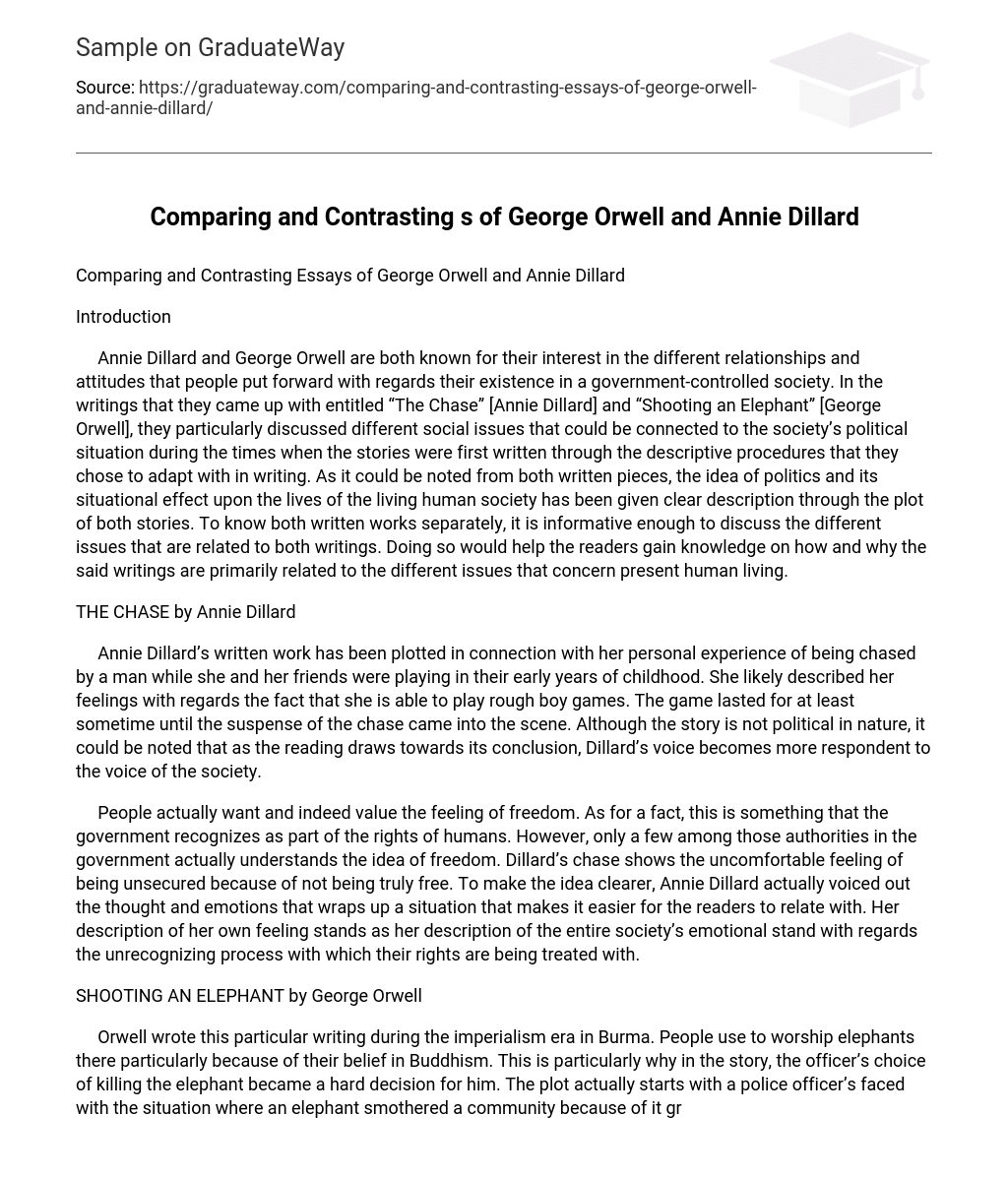Comparing and contrasting the essays of George Orwell and Annie Dillard.
Introduction.
Annie Dillard and George Orwell are both known for their interest in the relationships and attitudes that people have towards their existence in a government-controlled society. In their respective works, The Chase” by Annie Dillard and “Shooting an Elephant” by George Orwell, they discuss social issues that are connected to the political situation of the time through descriptive writing techniques. Both stories provide clear descriptions of how politics affects human society.
To understand each work separately, it is informative to discuss the issues related to each piece. This will help readers gain knowledge on why these writings are primarily related to different concerns regarding human life today.
The Chase by Annie Dillard
Annie Dillard’s written work is often connected to her personal experience of being chased by a man while playing with her friends in childhood. Through her writing, she likely explores the feelings of being able to play rough games typically reserved for boys. The game lasted until the suspenseful chase began, adding an element of excitement. While not inherently political, as the reading progresses, Dillard’s voice becomes more responsive to society’s voice.
People actually want and value the feeling of freedom. This is recognized by the government as a human right, but few authorities truly understand it. Annie Dillard’s chase illustrates the uncomfortable feeling of being unsecured due to lack of true freedom. Her description makes it easier for readers to relate to this emotional situation. It stands as a representation of society’s emotional stance towards the unrecognized treatment of their rights.
Shooting an Elephant by George Orwell
During the imperialism era in Burma, Orwell wrote this particular piece. The people there used to worship elephants, particularly because of their belief in Buddhism. This is why the officer’s decision to kill the elephant became a difficult one for him. The plot begins with a police officer facing a situation where an elephant had rampaged through a community due to it growing wild. This situation led him to a much more complicated decision of whether or not to kill the elephant while the entire community watched on, seeing it gaze innocently after just killing an Indian woman without knowing what it had done.
Afterwards, the climax finally shows that the officer had no choice but to kill the elephant. However, despite firing several shots, the elephant managed to survive briefly before succumbing to its injuries. The crowd’s stripping of its meat was a cruel form of torture. This behavior is reminiscent of European political parties who closely monitor those in positions of power and judge their every move against government guidelines.
Although the rules were set, the European Imperialistic Arrangements, a governmental organization, have shown less concern for their own rules when several situations arise later on. Sadly, this government’s act directly affects society’s lives.
Conclusion.
As can be carefully noted, the writings of both authors strongly suggest that people care about how much political issues relate to their own personal situations as locals of the community. The fact that they live within the community with which governmental arrangements are being pursued means that their freedom and views on how it is dealt with by society strongly affect their lives as individuals and as part of a larger society. True, these writings use a symbolic approach to convey the authors’ intended message to readers. Their continuous aim to enlighten people about political situations becomes a mirror for how their freedom is strongly manifested by laws.
References:
Annie Dillard’s The Chase” was published in 2006 and can be found at http://essayinfo.com/sample/essay/281/. The article was accessed on August 3, 2007.
George Orwell’s Shooting an Elephant” was published in 1950. The article can be found at http://orwell.ru/library/articles/elephant/english/e_eleph and was accessed on August 3, 2007.





